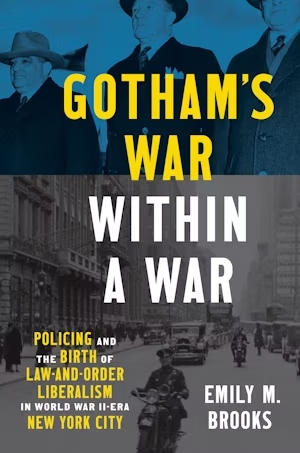MG: One thing that absolutely fascinated me about your book and the specific time period, both the 1930s and the Second World War period, was how it tracks the growth of federal power and its projection of force onto urban spaces like New York City. Do you imagine this story as showing the early foundations of a dispersed national security state?
EB: I viewed policing in the book more through a framework of urban politics than as an early expression of national security aims. In the period that I write about, many New York City residents and administrators saw interactions with the NYPD as the site where urban citizens would experience the government in action, which unfortunately, continues to be true for a lot of city residents.
But, one of the things that I found through my research, and that other scholarship on the New Deal and urban governance shows, is that the power of the municipal government and the federal government can grow in tandem. They need not be competing with each other. There is certainly a significant expansion of federal power that I track in Gotham’s War within a War. But, ultimately, my book shows how municipal leaders funneled national security aims through their own priorities and policies.
A perfect example of this melding of municipal and federal power is the closing of the famous Savoy Ballroom in Harlem. During the war, the NYPD successfully closed it down, because there was new attention and new military resources devoted to keeping white service members from socializing with sexually profiled women and particularly Black women. The club, however, had long been targeted by the NYPD, because it was one of the few in the city that permitted interracial dancing. So, the war bolstered the policing projects that La Guardia and Valentine had been attempting to enact throughout the 1930s.
That’s different from other cities and localities, where there was not such a robust law enforcement project already underway. There, during the war, the intervention of federal policing entities like the FBI and the Social Protection Division was a sharper break with preexisting practices.
